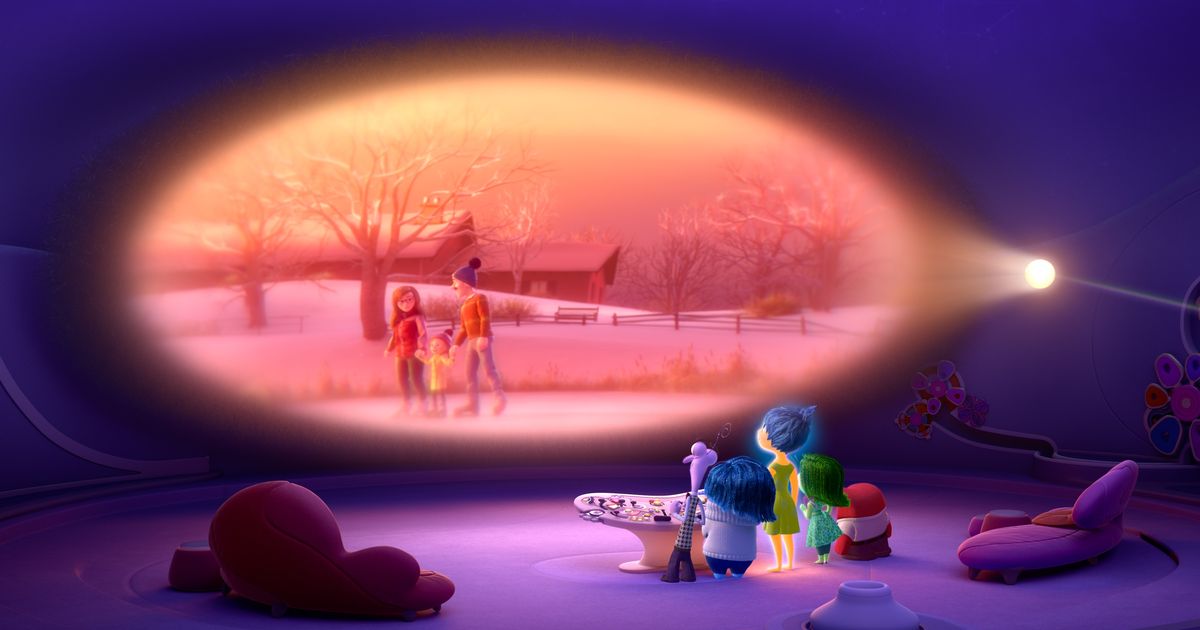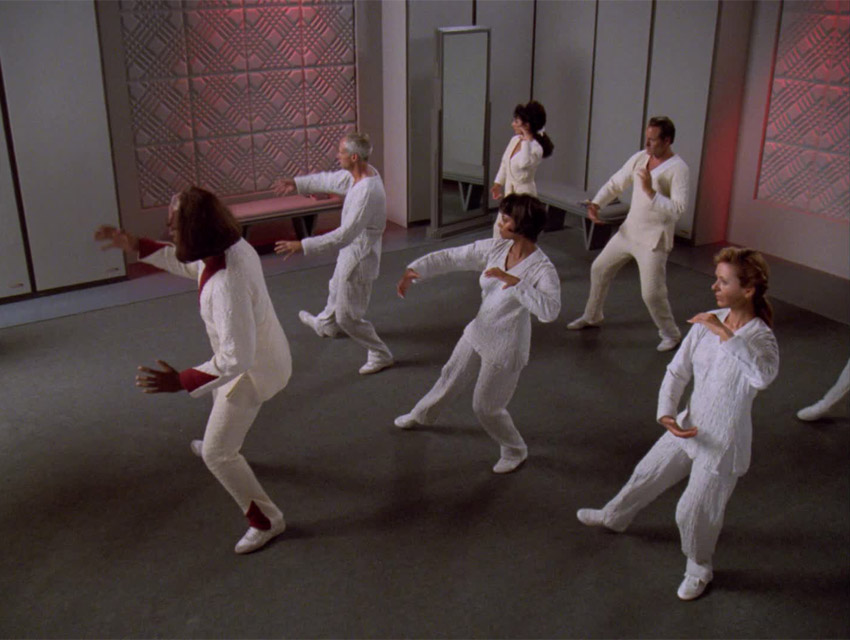In this module we focused on the different theories behind emotions. Emotions are part of our cognitive system and it’s impossible to separate our rational mind and emotional body. We created emotions with our life experiences, they do not just happen to us. This week we watched Inside Out and episode Man of the People from Star Trek: The Next Generation.
“Man of the People” Star Trek: The Next Generation

In this episode, the Enterprise is set out to help Ambassador Alkar be transported to Rekag, where he’ll be a part of a negotiation between two other planets. After his mother’s death, Alkar performs a ritual with Troi in which he transfers all his negative emotions to her. Since counselor Troi is considered to be an empath, it is hinted that Alkar chose her for this because she would be able to take in emotions easier than anyone else. Counselor Troi quickly begins to change along with her body, further conveying the connection between the body and mind. We see Troi during meditation (in which body and mind are intertwined) staring at a mirror, and studying her body as if she were seeing it change before her. She begins to act out in anger and jealousy towards others, and ultimately her body ages fast, shocking Alkar. It’s possible that because she was an empath, she “absorbed” the negative emotions quicker which resulted in her quick transformation compared to other receptacles. This episode further explains the Theory of Emotional Construction because the emotions did not just happen to Troi, they were transported into her mind, which would mean they happened to her, and in turn deteriorated her body.

Inside Out

In Inside Out, we meet eleven year old Riley and her 5 emotions: joy, sadness, anger, disgust and fear. Her memories and emotions were created from experiences she went through while growing up. The older she got, the more memories she made and the more emotions she made, which explains how emotions are created by us, and not just happen to us. This is further explained when she decides to leave San Francisco to go back to Minnesota to create more joyful memories, which will make her happy again.

The emotions made her act in certain ways because emotions are constructed concepts based on our social reality. Going to a new school meant she wanted to get in with the popular crowd, which is why she tried acting “cool” in front of the popular kids, and why she was devastated when she began crying in front of her classmates. Since bodily sensations are emotions, we were able to understand and see she was sad when she started to cry remembering her life back in Minnesota. I thought the core memories being created towards the end in all different colors of her emotions was a creative way to show how complex emotions and memories are.








 case is Riley’s memory of the aftermath of losing the big hockey game. She’s sitting
case is Riley’s memory of the aftermath of losing the big hockey game. She’s sitting  out or anything) is a technique similar to meditiation–it is used to both clear the mind and phsyical protection (Mok’bara is the basis of Klingon hand-to-hand combat). Aside from the fact that watching Worf teach a meditation class is seemingly hilarious and contrasts to his more serious Klingon maneurisms, Mok’bara works as a contrast to Alkar’s funeral meditation. Alkar’s funeral meditation highlights the fact that Alkar is an “energy vampire” of sorts. Where Worf meditation works to clear the mind and protect yourself, Alkar’s meditation is works to lower your defenses and allow him to inflict his negative emotions onto you. Being that Troi is an empath, this means that she is more vulnerble to attacks of this nature as well as being more effected by them.
out or anything) is a technique similar to meditiation–it is used to both clear the mind and phsyical protection (Mok’bara is the basis of Klingon hand-to-hand combat). Aside from the fact that watching Worf teach a meditation class is seemingly hilarious and contrasts to his more serious Klingon maneurisms, Mok’bara works as a contrast to Alkar’s funeral meditation. Alkar’s funeral meditation highlights the fact that Alkar is an “energy vampire” of sorts. Where Worf meditation works to clear the mind and protect yourself, Alkar’s meditation is works to lower your defenses and allow him to inflict his negative emotions onto you. Being that Troi is an empath, this means that she is more vulnerble to attacks of this nature as well as being more effected by them.











